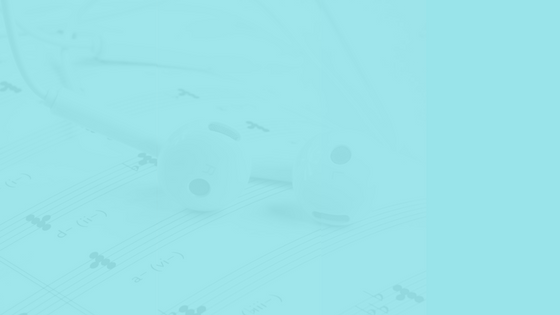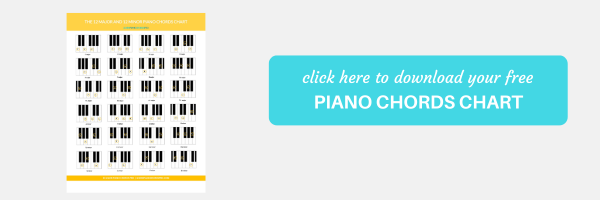4 Things Every Beginner Pianist Should Know
The other day I got an email from one of my subscribers telling me that there were too many things to learn from Youtube and it overwhelmed him.
He asked me if I could just streamline a couple of things that he could easily start with.
I totally understand the struggle he was facing because I know it can be very confusing and stressful to figure out on your own what to learn, what’s important, and the techniques involved in playing the piano.
In this post, I want to help you kick-start your piano-playing journey as a beginner pianist on the right path.
I know there is a lot of information out there fighting for your attention and I don’t want you to get drowned in it and never get the chance to start at all.
So I have prepared these 4 things that every beginner pianist must know so that you’re clear with what you should be focusing on and setting yourself up for success.
Let’s dive right in!
1. Pitch
Remember one of the first few things you learned in school was ABC?
Now that you’re a beginner pianist, the first thing you must know is pitch or note which is like your ABC. I will use pitch and note interchangeably in this post.
Pitch is the height and depth of a sound. The piano can produce different pitches. These pitches are represented by the black and white keys on the piano.
The original number of keys on a piano is 88. However, it’s totally fine to use a minimum 66 keys piano if you’re just starting out.
I’m also using just a 66 keys piano keyboard for this demo and to play the songs I love.

This looks like a lot of keys to recognize or remember right? But you’ll notice that a set of keys that look like this, repeat itself across the piano. This is known as an octave.
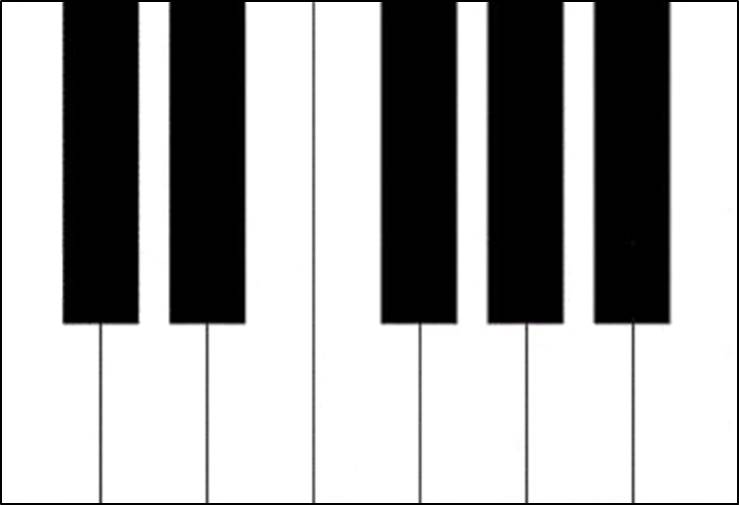
So yeay to octave, you only need to learn this set of keys! Now let’s zoom into these keys.
There are 7 white keys and 5 black keys in this one octave.
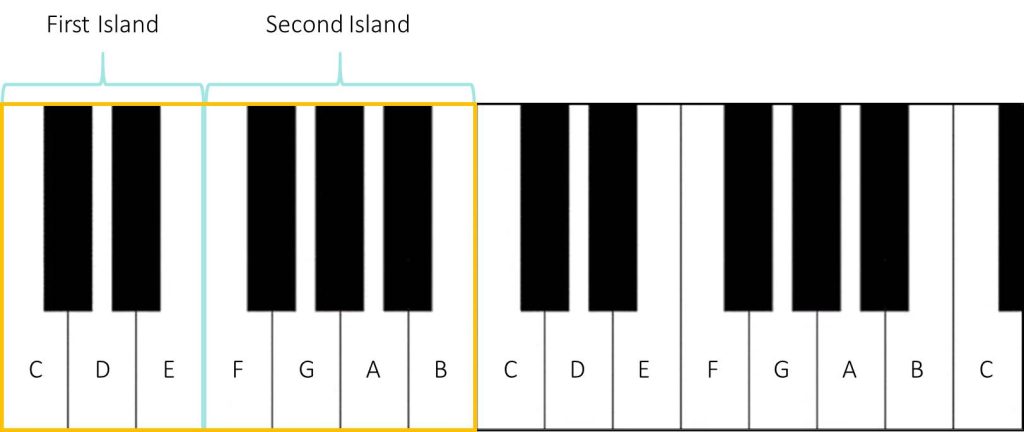
There are 2 islands. The first island consists of the keys C, D, and E, and on the second island, we have F, G, A, and B. These are the white keys of the piano.
So remember, this set of keys repeats itself across the piano.
As a beginner pianist, it’s important that you know where the keys are because once you know this at the back of your mind, you’re confident and you can learn the piano faster this way.
You no longer hesitate and you can form chords, and play the scale and the melody easily.
Alright, I want you to get yourself really familiar with just these 7 white keys for now.
2. Scale
The second important thing I want you to know is the scale.
Now you may have heard or may have not heard about the scale before. What is it and what is it for?
Well, my friend, the scale is the foundation of chords, melody, chord progressions, and more. So it’s a kinda big deal.
On the piano, the scale is pitches arranged in a systematic manner ascending and descending across the piano.
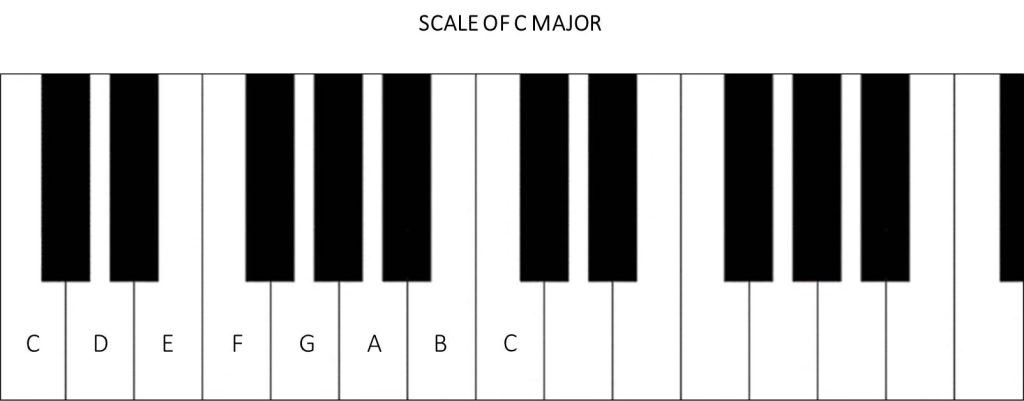
I just played the scale in the key of C major because I started with C and ended with C. You’ll notice that the scale of C major consists of only the white keys.
If you were to add a B flat to the scale of C major, it would sound wrong. Try it out for yourself.
So you must make sure when you play the scale of C major, you play only the white keys for the scale to sound correct.
You can use the pitches from the scale of C major to play the melody. You can also use the pitches from the scale of C major to form chords. You can also play the melody and chords together.
Because you have used the pitches from the scale of C major to play this song, this song is known to be played in the key of C major.
For a beginner pianist, I want you to begin by playing the scale ascending and descending on the right-hand side using the finger numberings below.
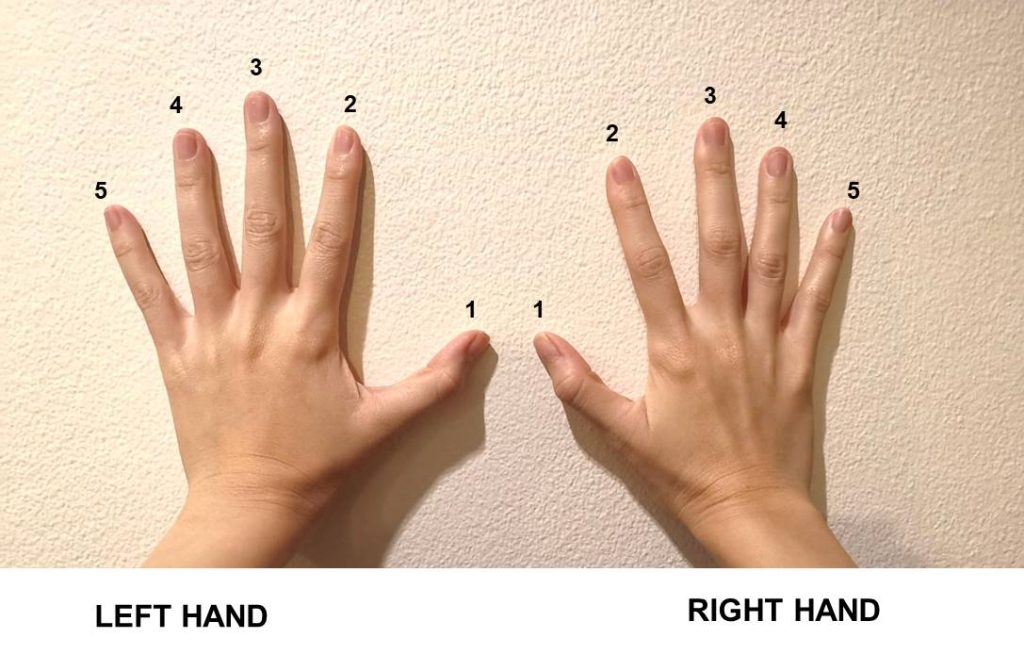
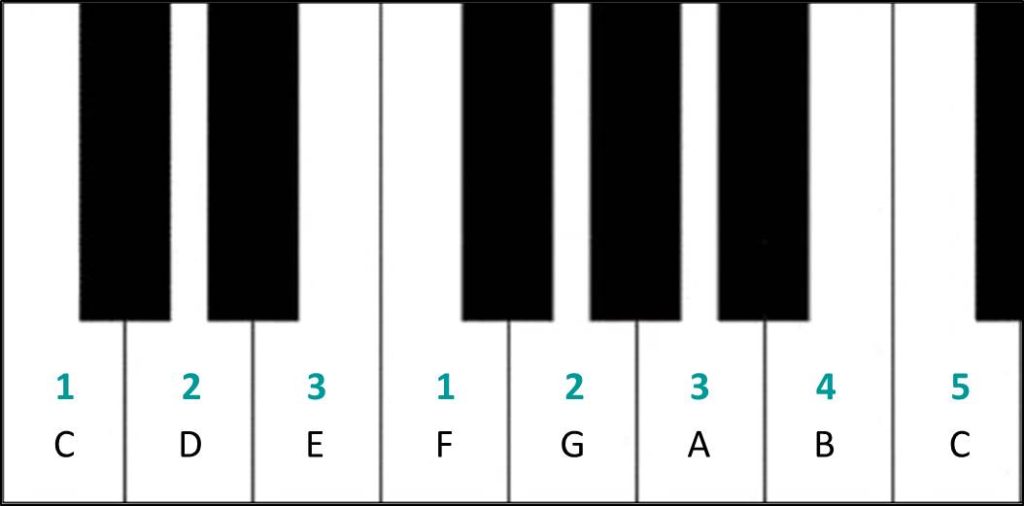
Do the same on your left-hand side using the finger numberings shown.
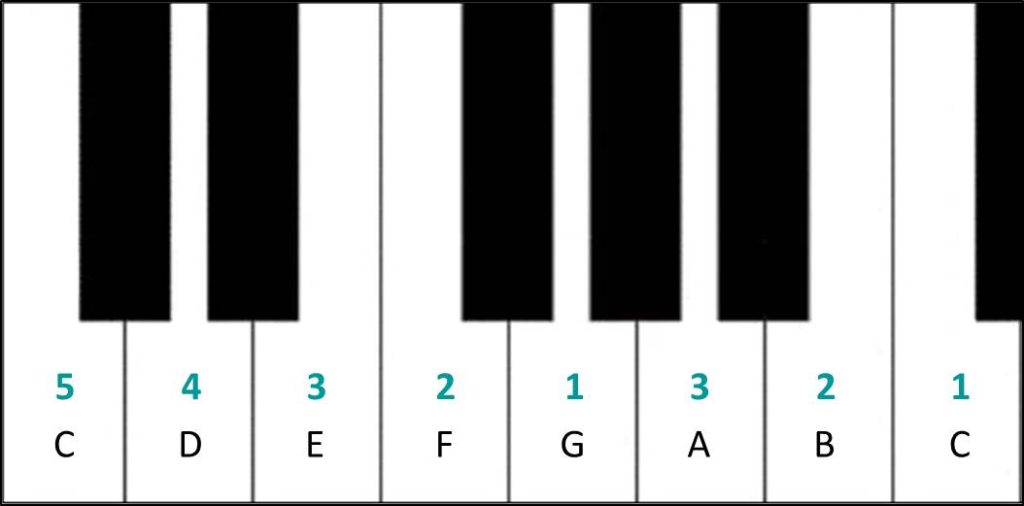
This exercise not only helps strengthen your fingers and improve control but also for you to get familiar with the pitches that make up this scale.
3. Chord
Now here comes one of the most important things that make up a song, the chord. What is a chord?
A chord is basically a bunch of pitches or notes played together simultaneously.
You can use chords to play the songs you love as an accompaniment to your singing or the melody of a song.
The most basic chord is known as the triad chord. It consists of the root, third, and fifth notes of its scale. We’ll look into this in a minute.
A chord can either be a major or a minor chord but of course, there are many more other chords. But let’s just look at the major and minor chords first for now.
Major Chord
So first, the major chord. Here I’m using C major chord as an example.
As I mentioned earlier, a basic triad chord consists of the root, third, and fifth notes of its scale.
For C major chord, the root note is C, the third note is E, and the fifth note is G.
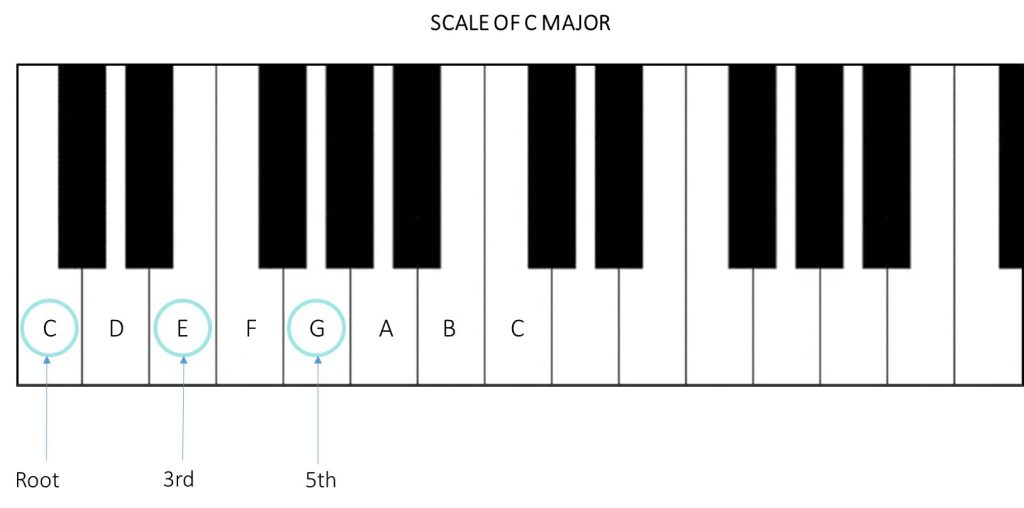
By the way, do you know that there are 12 major chords that can be formed on the piano?
Yup! But don’t worry, I’m not gonna let you memorize all 12 chords! 🙂 I have a simple formula that you can on any major chords that you want to play on the piano.
To play any major chord, all you have to do is to apply a simple formula of 5-4. So, what does that mean?
Let’s look at the C major chord again. It consists of the notes C, E, and G right?
To form this chord, all you have to do is to count 5 keys regardless of the color of the keys from the root note which is C, and land on E which is the third note. And then from there, we count 4 keys and land on G. And that’s your C major chord.
Below is the formula.
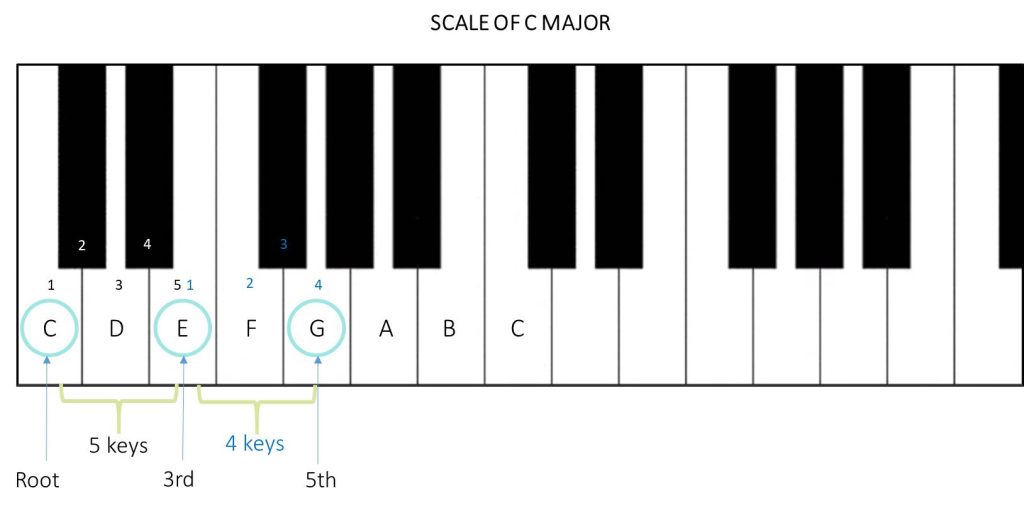
Let’s try this formula on another major chord just for fun. Let’s try to play G major this time.
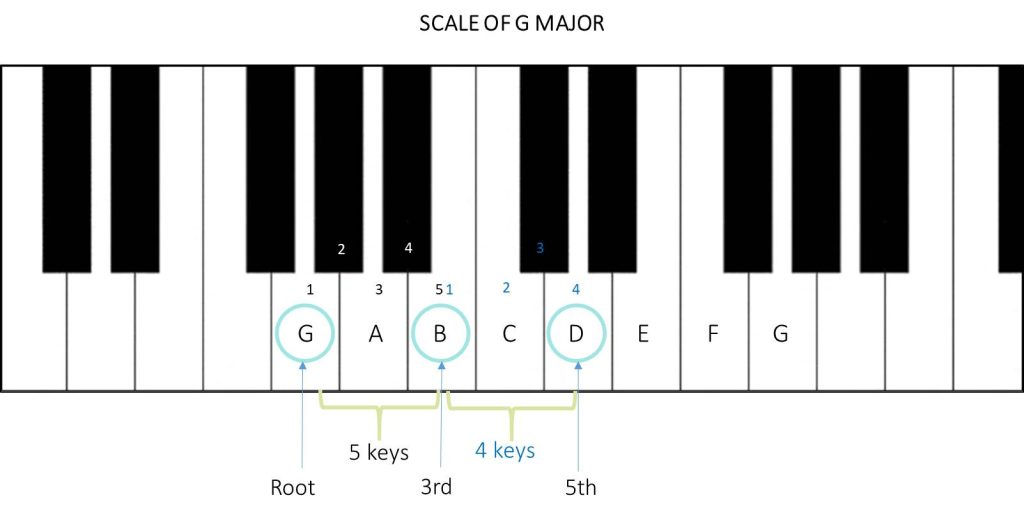
So the root note or bass note is G. We’re gonna count 5 keys from G and land on B. From B, we count 4 keys and land on D. And that’s your G major chord.
Hey, guess what? I have prepared a complete 12 major and 12 minor chords chart just for you! With this chart, you can play any major and minor chords easily. You may download your free piano chord chart below.
Minor Chord
Now let’s move on to the minor chord. Minor chords often sound sad or melancholic. Try it on the piano and see how you feel about it.
This is A minor chord. The root note is A, the third is C and the fifth note is E.
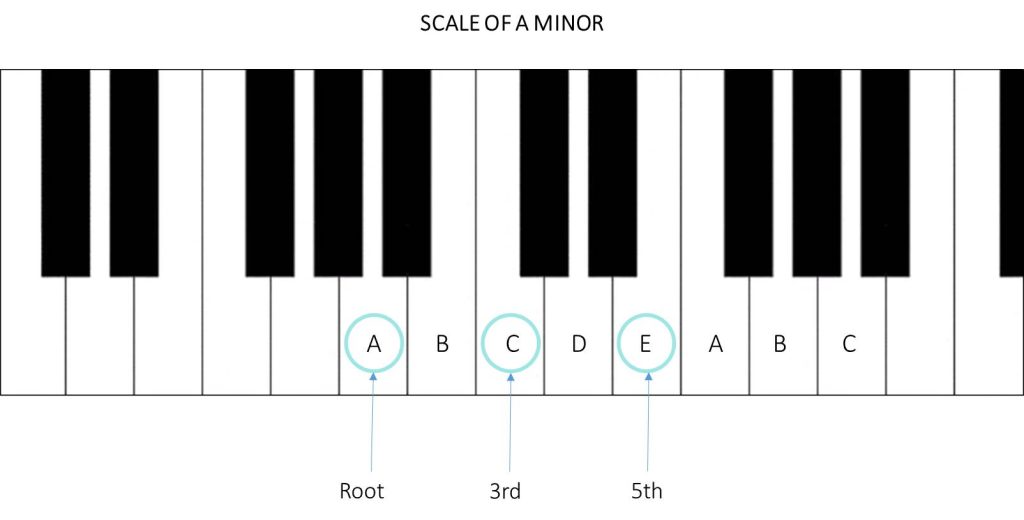
Similarly, there are 12 minor chords that can be formed on the piano.
To play any minor chord on the piano, all you have to do is to use the formula of 4-5.
Now using A minor as an example, you count 4 keys regardless of the color of the key from the root note A and land on C. From C, you count 5 keys also regardless of the color of the key, and land on E.
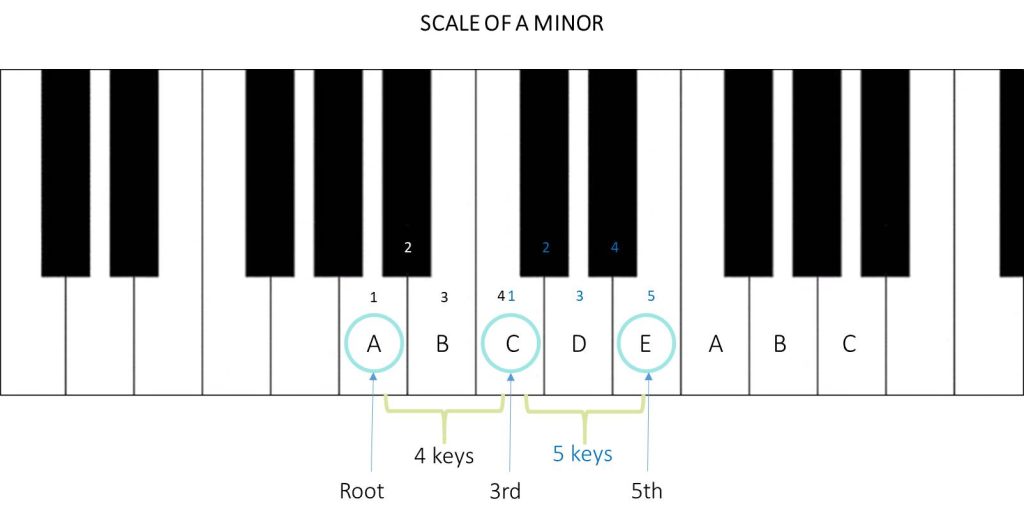
And baaammm! That’s you A minor chord.
Now, let’s try this formula on another example just for fun! Let’s try to play D minor this time.
The bass note is D, so we count 4 keys from D and land on F and from F we count 5 keys and land on A.
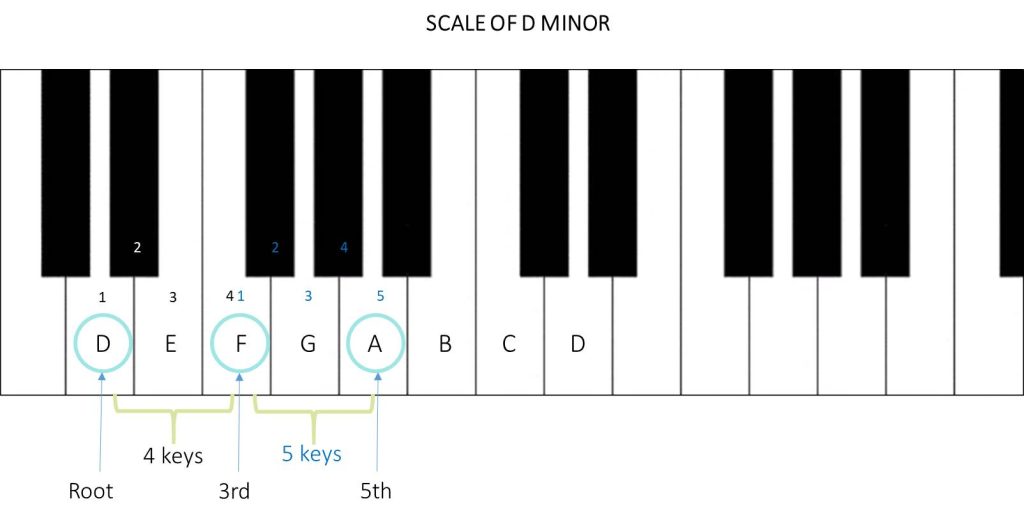
That my friend, is your D minor chord. You can play any minor chord using this formula.
So if you’re a beginner pianist, I recommend that you start with just these 4 chords here:
C major – G major – A minor – F major
Get yourself really familiar with them and then switch from one chord to another at the same time on your left-hand side, and play the bass note of each chord.
For C major, is C. G major is G, A minor is A, and F major is F. Count 4 beats in between each chord, 1-2-3-4. Check out the video attached to this post to see how to perform this.
If you haven’t yet downloaded the complete 12 major and 12 minor chords chart, get yours below.
4. Chords progression
The last one you must learn to help you to play tons of songs fast is chords progression.
Chords progression is a series of chords that repeats or changes in a musical piece. There can be one or more chords progression occurring in a piece of music or song.
Chords progression is important especially for beginner pianists because it helps you to learn a piece of music easily and quickly.
Now take a look at this chords sheet for the song, Hello by Adele. I love this song!
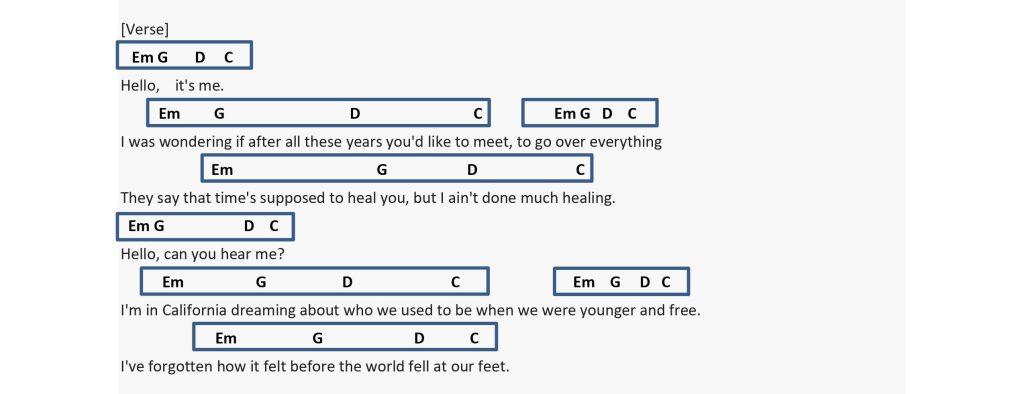
The chords progression in the verse is E minor – G major – D major – C major. You’ll notice that these chords progression repeats itself throughout the verse.
When you can play and switch from one chord to another, you can just repeat this set of chords for the entire verse.
It’s not always that you’ll find the same chords progression used throughout a song. Sometimes, the chords progression would change too. Take a look at the chorus of the same song.
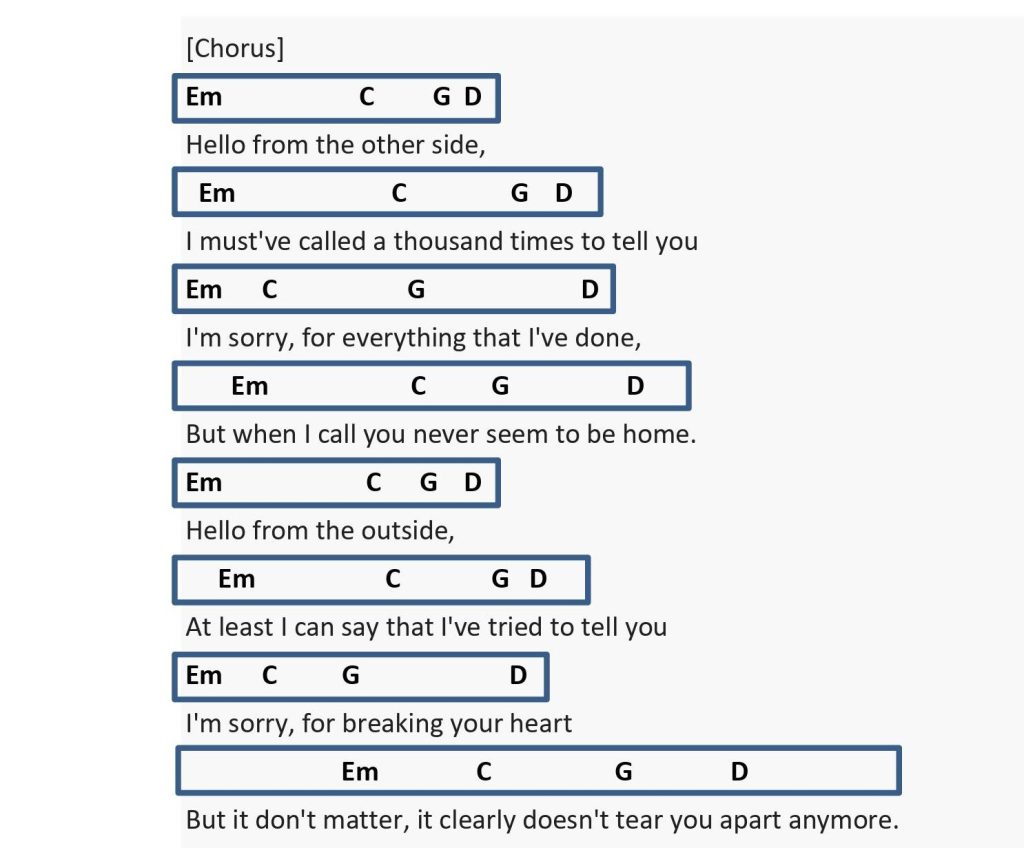
It changes to E minor – C major – G major – D major. This chords progression is still easy to play as the chords involved are the same as those used in the verse but with different sequences.
Now, I’m a big believer that you learn better when you’re doing the actual thing.
To start, I recommend that you pick a song that you’ve always wanted to play and search for the chords sheet of that song on the internet. You can check out www.ultimateguitar.com. You can find the chords sheets for almost any song you want to play for free here.
Do that and see if you can identify the chords progression in the song and start playing your very first song.
Conclusion
There you have it my friend, the 4 things that will help you get started on the right track as a beginner pianist.
I hope this post silences the noises around you and helps you find clarity on what to do next and set yourself up for success in this piano-playing journey.
NOW LET’S CHAT IN THE COMMENTS: WHAT ARE SOME OF THE STRUGGLES YOU’RE FACING CURRENTLY AS A BEGINNER PIANIST?

